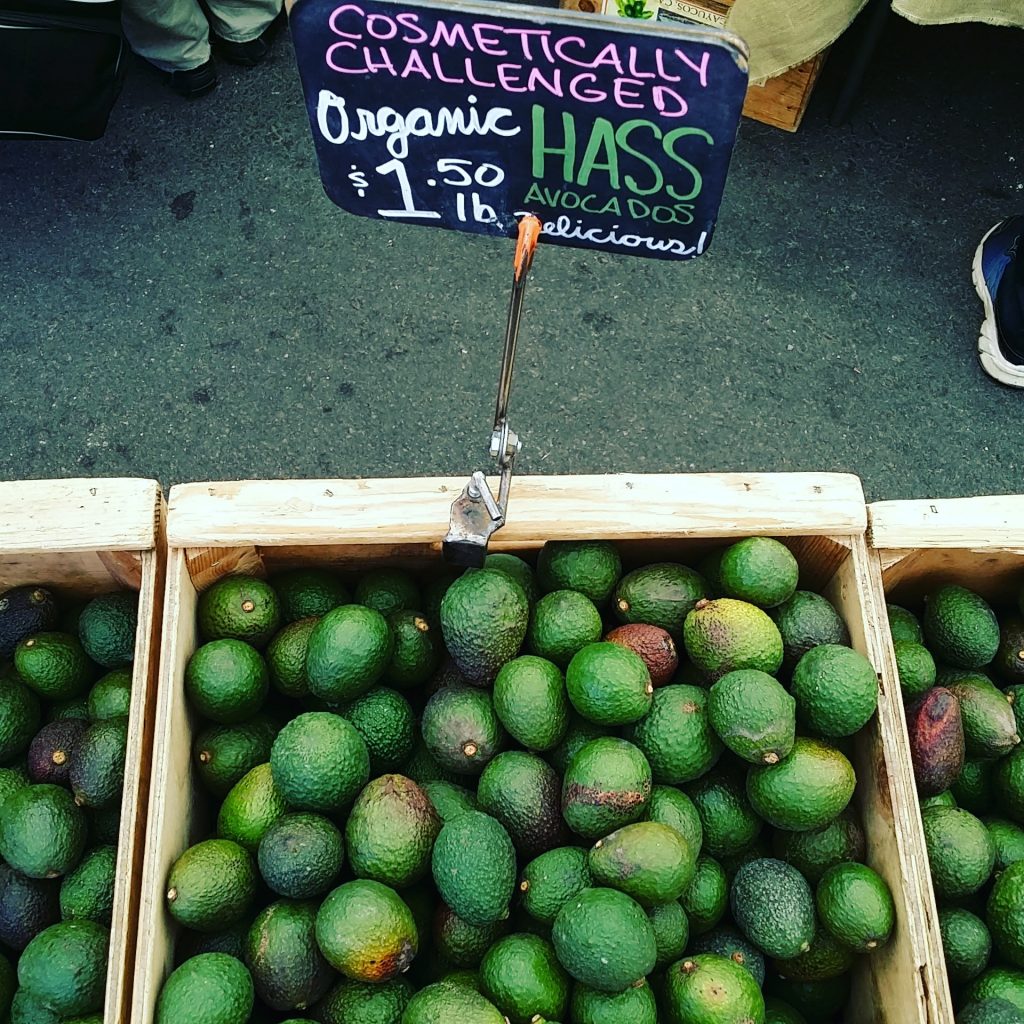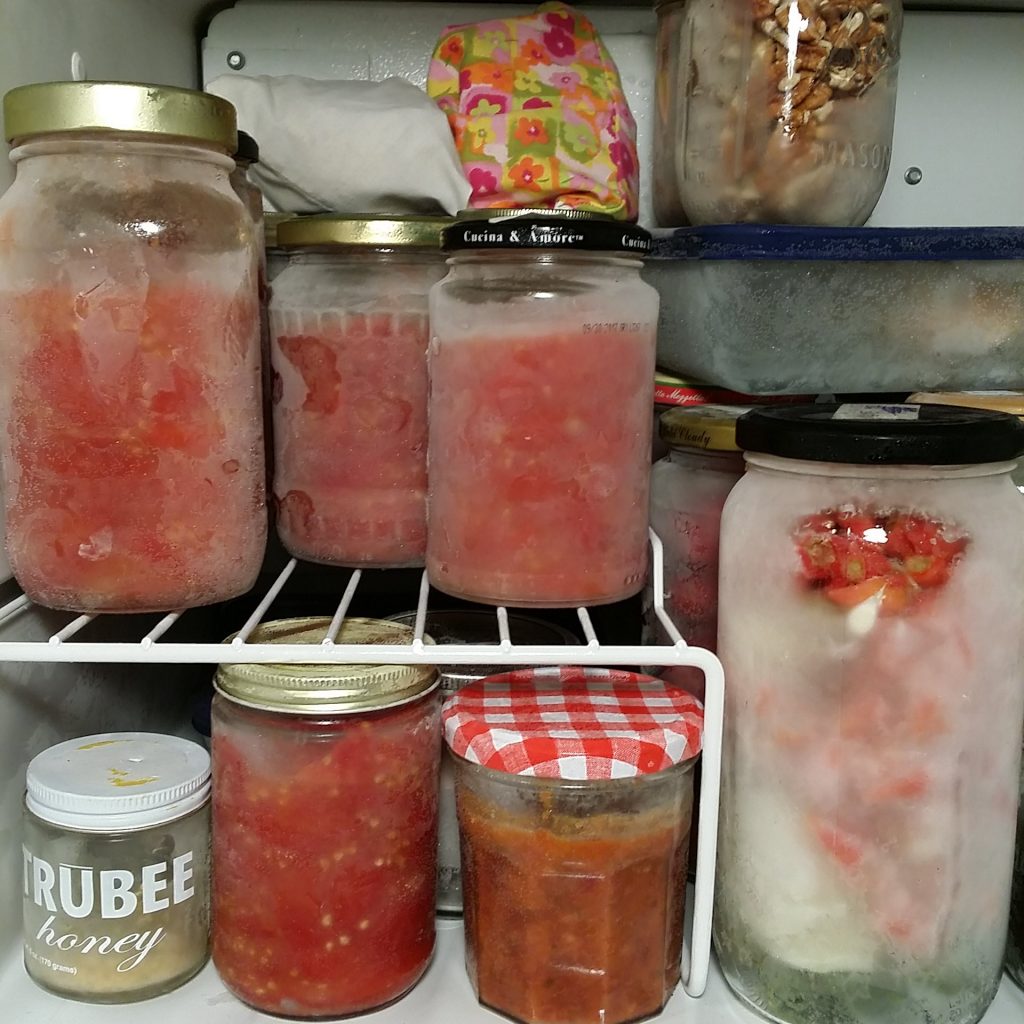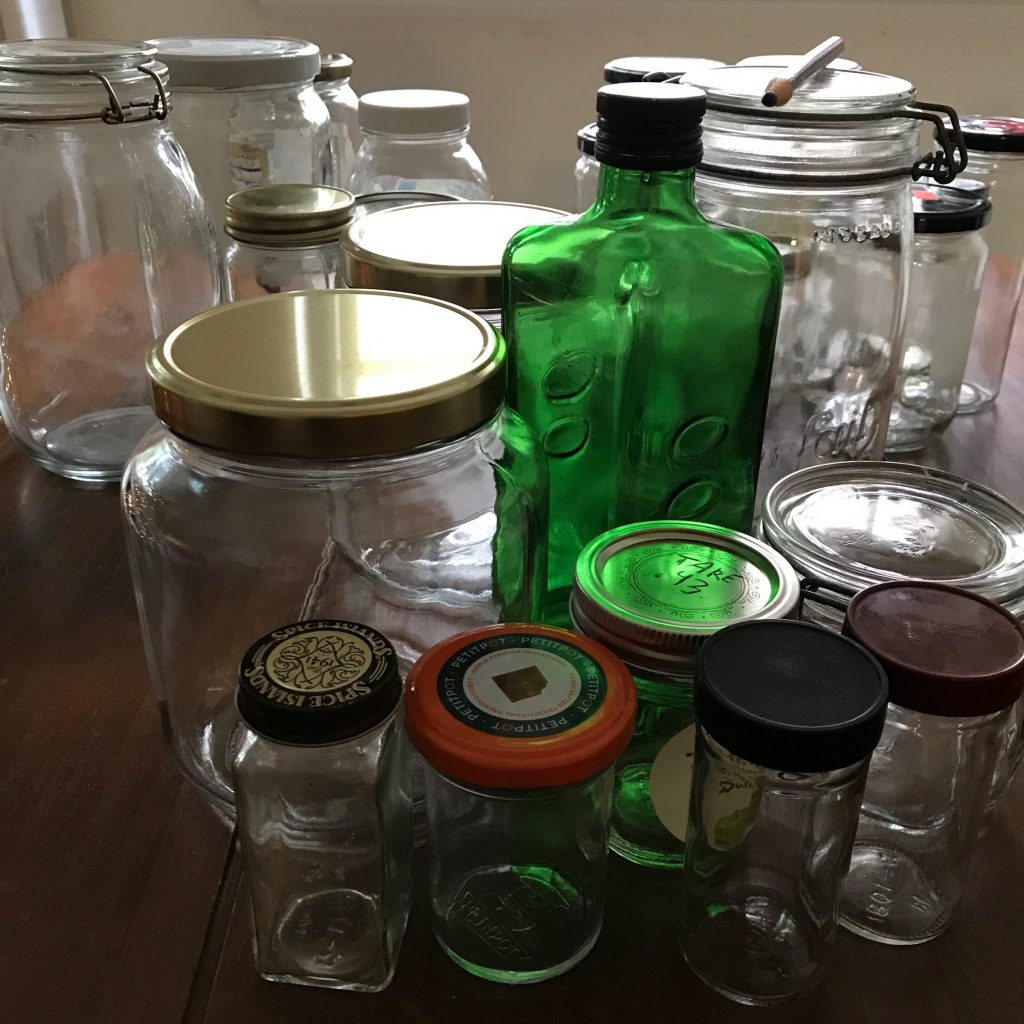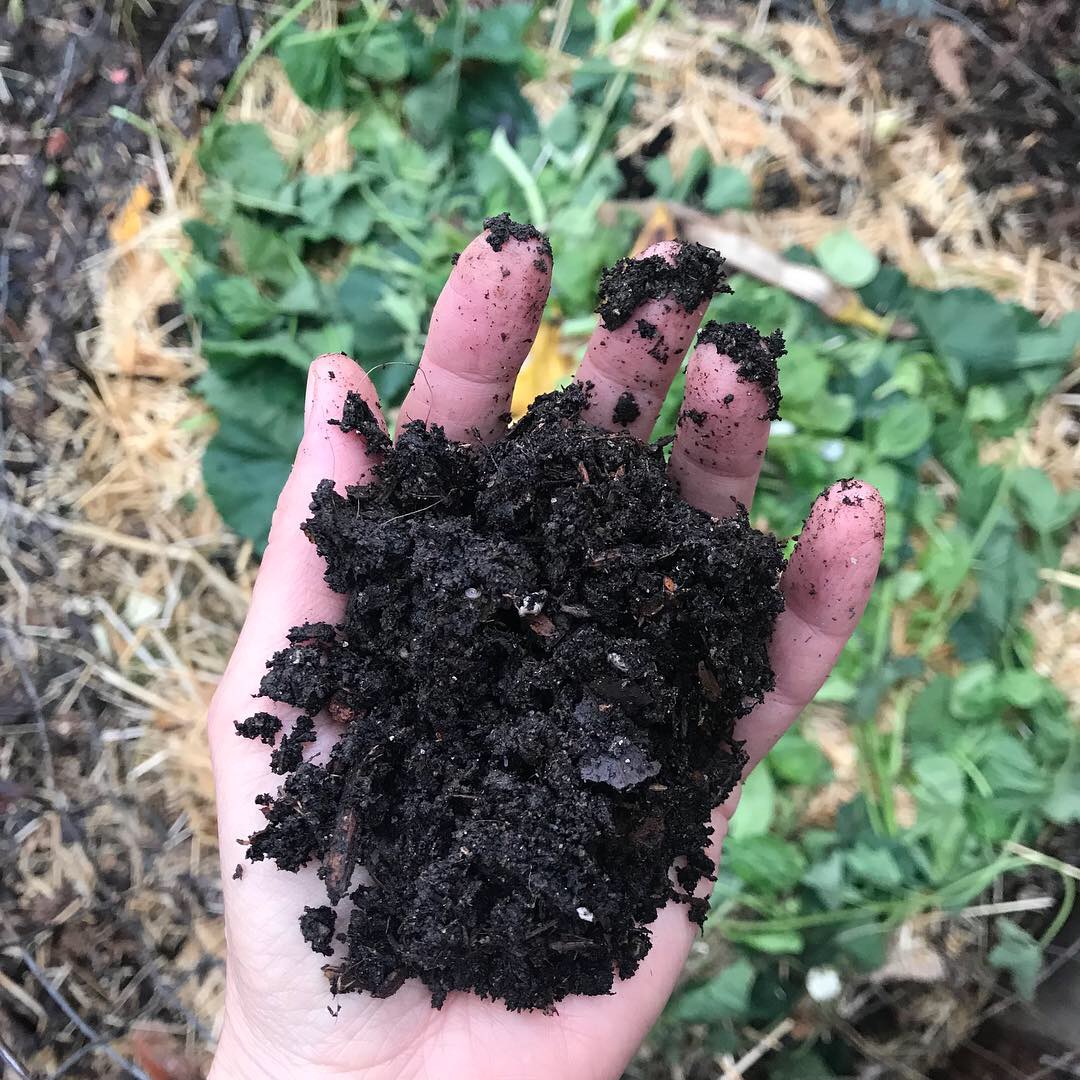The barrage of bad news can leave us feeling depressed, paralyzed and resigned to a terrifying fate. And while, yes, our leaders need to represent the people rather than fossil fuel companies determined to increase oil and gas production, individuals can take one meaningful climate action now:
Don’t waste food
Think of reducing food waste as—sometimes literally—the low-hanging fruit of combating climate change.
Food Waste Facts
- Up to 40 percent of the food we produce in the US goes uneaten. National Resources Defense Council
- Worldwide, a third of the food we produce goes to waste. Food and Agriculture Organization of the United Nations
- Americans waste, on average, one pound of food per day per person. Guardian
- If food waste were a country, it would be the third largest emitter of greenhouse gases, just behind the US and China. Project Drawdown
- When food decomposes in landfill, it releases methane gas, a greenhouse gas that warms the planet at a rate 86 times greater than carbon dioxide. Scientific American
- Worldwide food waste contributes 8 percent of all anthropogenic (manmade) greenhouse gas emissions. Project Drawdown
- Wasted food squanders 21 percent of all the water used in US agriculture. National Resources Defense Council
- By weight, food is the largest contributor to US landfills. National Resources Defense Council
- 1 in 8 people living in the US is food insecure. While this statistic doesn’t relate to greenhouse gas emissions, I included it because it is absurd. National Resources Defense Council

Food Waste Solutions
1. Eat the food
Yes, this is both obvious and simplified. But the problem of food waste is an edible one. We can eat the food.
22 more solutions to reduce food waste at the consumer level
We can’t blame corporations and supermarkets and restaurants for all of this food waste. Although industry plays a huge role, a whopping 43 percent of food waste occurs in homes.
2. Start a food waste audit
You will have a better idea of what you waste if you measure it. At the end of each day, jot down what food went to waste and why. You might discover that no one in your household likes your red velvet ketchup cake and you could stop baking it.
Or perhaps you find shriveled Romaine in the back of the refrigerator all too often. You may just need to plan your meals a bit more (see number 5).
3. Use your senses
If you have leftovers in the refrigerator that your worry have gone south, give them a sniff and take a look at them. If they smell okay and look okay, they probably are okay to eat. If not, compost them (see number 22).
With packaged food, make this same judgment rather than relying on the best-before, sell-by and use-by dates stamped onto the packaging. Generally unregulated, these dates do not indicate food safety. Rather, these suggested dates from the food manufacturer indicate the food company’s opinion of peak quality. In other words, they are a marketing gimmick.
Best-before dates encourage people to waste food. Concerned they will poison themselves and their loved ones if they eat food a day past its best-before date, they regularly toss out perfectly edible food—and buy more food.
4. Shop the pantry and refrigerator first
If you use up food that you have on hand, then you’ll waste less of that food—and save money. Before you shop, take a quick glance through your pantry and refrigerator and make a mental note (or paper note or digital note) of what you find.
5. Plan a few meals
Think of a dish or two you can make with the food you found in number 4 and make a list of any missing ingredients. What else would you like to eat within the next few days or week? Add the ingredients you’ll need for those dishes to your shopping list—and stick to that list when you shop. Go here for easy meal planning and a planner you can fill or download.
6. Buy less food
Many of us, when we see all the delicious food at the farmers’ market or grocery store, can’t resist it and buy too much. Or we vow to eat more fresh fruit and vegetables in a noble attempt to eat better—and we buy too much. Or we go shopping hungry. To waste less food, buy less food. If you can, also consider buying smaller amounts of food more frequently. This ensures your food will always be fresh.
7. Choose ugly fruit and vegetables
Some of the 40 percent of the food we waste in this country never actually makes it to the store. Why? Because most grocery stores reject ugly produce—kinky carrots, oblong apples, misshapen potatoes. But thanks to awareness-raising movements like the “Ugly” Fruit and Veg Campaign, people have begun to discover that produce that doesn’t fit into the supermarket image of ideal beauty tastes delicious—and costs less.
Some grocery stores have begun to sell ugly produce. If you shop at the farmers’ market, however, much of the produce is wonky because that’s how fruit and vegetables grow. A few vendors at my farmers’ market sell cosmetically challenged apples, avocados and occasionally other types of produce for a deep discount. I sometimes can’t tell the difference between the supposedly ugly offerings and their “prettier” counterparts.

8. Store food properly
Not everything needs to go—or should go—in the refrigerator. Cool temperatures render tomatoes mealy and bland. Apples, however, will keep longer in there than they will at room temperature. Citrus—oranges, grapefruit, lemons—can develop spots on their rinds in cool temperatures. Click here for my A to Z list of storing produce without plastic.
9. Do some prep work when you return home from the store
Leafy greens like lettuce, kale and spinach tend to wilt quickly so I plan to eat them soon after I buy them and I prep them when I return home from the farmers’ market—ideally. I trim them, cut any large pieces into smaller ones, wash and then spin them around outside over my head in a clean cloth produce bag. I then put the bags of prepped and ready-to-eat greens in the vegetable crisper of the refrigerator. They stay fresh this way for a long time—at least a week.
10. Freeze excess food
If you have some food on your hands that will start to turn before you can eat it, freeze it. You can freeze all sorts of food—soup, bread, cooked beans, nuts, cheese, milk, blanched vegetables, roasted tomatoes, fruit (slice it and spread it out on a tray and then transfer to jars) and more. Click here for how to freeze food without using plastic.

11. Learn to cook without a recipe
Forgo the recipes, learn how to cook a few endlessly versatile and simple dishes, add this and that, taste as you go and you won’t waste a morsel. Cooking this way—I call it freestyle cooking—may not result in Instagram-worthy meals but they will taste delicious. Click here for a pile of freestyle non-recipe recipes.
12. Cook extra food that can go into the next dish
Wait, what? I want you to cook more food?! Won’t that lead to more food waste, not less? I’m convinced that cooking and kitchen efficiency reduce food waste at the consumer level more than anything. But cooking takes time. If you always have something on hand to turn into something else, you’ll save precious time.
For example, when you cook rice to go with a broccoli tofu stir-fry with peanut sauce, make extra rice and the next night, turn that into fried rice. You won’t have to start from scratch every night, you’ll use your creativity and you’ll use everything up.
13. Learn to preserve food
A head of cabbage sitting on your kitchen counter will rot within a couple of weeks. But chop it, salt it and submerge it in its own juices for a few days and you’ll have sauerkraut, which keeps for many months. Lactic acid bacteria (LAB), which occur naturally on all vegetables and increase after harvest, perform this magical transformation. Click here for sauerkraut 101 and the recipe.
14. Eat meals at—and from—home
When we eat most of our meals at home (or from home when you brown bag it to work or school), we eat the food we have at home and waste less of it as a result.
15. But when you do eat out, take a container for leftovers
Take a container or a jar or two with you in a cloth bag when you go out to dinner so you can pack up the leftovers you can’t finish. You won’t waste the restaurant’s disposable to-go boxes.
16. Serve less food
Do you really need to cook an eight-course meal for your dinner party? And what about those giant plates you set the table with? Do you have smaller ones? Smaller portions reduce the amount of food we can’t finish—and waste.
17. Avoid snacking at the office, at school and on the go
You can consume only so much food in a day. If you snack in between mealtimes, you won’t be hungry for all that food you carefully bought for your meals.
18. Store food in glass containers
If you store leftover lasagna in an opaque container, you may forget about it until you stumble upon its slimy, decomposed remains a month later. Store food in glass in your refrigerator, your freezer and your cupboards, and you can see what you have at a glance. And now you have an excuse to hoard more jars—to help prevent food waste. All for the cause!

19. Save Our Scraps
Vegetable scraps for broth. Apple scraps for vinegar. Potato peels for frying up. Citrus peels for candy, zest, citrus salt, cleaning and more. Cooking with every last little bit makes cooking more fun and creative—and less expensive! Here are 15 creative uses for food scraps.
20. When the time comes to buy a new refrigerator, choose a smaller one
The Western diet, consisting of pre-packaged, processed convenience foods, does not require cooking skills. People used to preserve food through fermentation (see number 13), salting and smoking. They would put up food when it was plentiful to prepare for when it would not be.
Today, we rely on our refrigerators to prolong our food’s shelf-life, essentially preserving our food for us. And refrigerators—big energy hogs—just keep getting bigger and bigger. This trend affects our wallets, our health and our waste streams—all for the worse. Because the larger the refrigerator, the more food you buy, the more food you eat, and the much more likely some of the food stashed in the refrigerator will end up in the trash.
21. Give away excess food
Share your extra food with friends and neighbors. Or go online.
Apps and websites have made this easier to do. OLIO, a free app, “connects neighbours with each other and with local shops and cafés so that surplus food can be shared, not thrown away. Users of the app simply snap a picture of their items and add them to OLIO. Neighbours then receive customised alerts and can request anything that takes their fancy. Pick-up takes place at the home or store, an OLIO Drop Box, or another agreed location—usually on the same day.” Look for the app in the AppStore and on Google Play. Visit the website here.
Another site, Falling Fruit, provides a global map of free edible plants. Enter your address on the website and up pops a map with nearby locations for free foraging. When I first learned about this site and searched my area, hundreds of locations popped up within just a few miles of me. I was amazed. Use the site to either list or find food. Check out the website here.
Check out this list of 20 organizations both diverting perfectly edible food from going to waste and sharing it.
22. If food goes bad, compost it
Ideally, we would eat all of the food we buy but life happens. When you can’t eat it or donate it or feed it to your chickens (because you have no chickens) before it becomes inedible, compost it.
Compacted in a landfill, food lacks exposure to air and so breaks down anaerobically, producing methane gas. Landfills emit this methane gas—a greenhouse gas much more potent than carbon dioxide—into the atmosphere. Food waste and food scraps do not belong in a landfill. Put that same food waste on a compost pile and it will actually sequester carbon dioxide from the air.
Can’t compost in your small apartment? There’s an app for that. ShareWaste is like Airbnb for your food scraps. You search the ShareWaste map for people accepting compost scraps where you live—or where you will be traveling to—and then you drop them off. Or you sign up to accept food scraps. All free, all volunteer run. This is the real sharing economy!

23. Show food the respect it deserves
Cheap, fast, plentiful food and a lack of knowledge about where that food comes from foster little respect for it. The more we respect food, the less of it we waste. So plant a fruit tree, teach your kids how to grow vegetables, visit a farm or get to know the hard-working people who grow our food.
Find more ways to reduce wasted food (and packaging waste) in my book!
- Taste Canada silver for single-subject cookbooks
- Second-place Gourmand cookbook award in the category of food waste
- Shortlisted for an award from the International Association of Culinary Professionals





Years ago when my children were young I would bake an after school snack cake with leftover breakfast and lunch foods . I packed their lunches and told them to bring home what they didn’t eat . I called it refrigerator cake. I so enjoy reading your wise words and great ideas . Thank you so much .
I was talking about food and cooking with a friend recently and he asked what my “specialty” was, or what I liked most to cook. I couldn’t really answer him, but when I posed the question to my family they said, “your specialty is making something out of nothing.” I guess you could say my favorite thing to cook is what’s in the fridge, freezer and pantry. I hate for anything to go to waste. Thank you for taking the time to educate and motivate your readers!
Love these ideas and the Share Waste app! We will definitely use it when we relocate back to the US. I was wondering how we could handle our food scraps living in a small condo!
Freezing food requires it to be kept in a freezer, which requires electricity, which does not reduce one’s footprint. A far more sustainable method of food preservation is to can it. While the canning process does use energy, energy is not required to keep the food preserved for an undetermined amount of time – and food is shelf stable for a minimum of a year if not longer. Steam and pressure canners both use a minimal amount of water while making food shelf stable for a longer period of time than freezing.
It’s interesting in the same post that you talk about freezing food, you also talk about having a smaller refrigerator to decrease the size of one’s footprint.
Well the thing is most people in the West have refrigerators and freezers. I don’t know anyone living indoors who doesn’t have one. If it’s there, you may as well use it. It is running whether you fill it or not. I would love to forgo my refrigerator one day. Eventually. You have to use your head and do what makes sense in your circumstances.
Thanks a lot. I think I’ll translate some of this article to post it on my blog. Please, may I?
Sure Paola 🙂 Will you please link back to me? Thank you,
Anne Marie
Of course 🙂
Thank you!
Really love these ideas ,I hate for anything to go to waste.
Amazing post and so important! Since i started my vegan diet a few months ago i surprisingly have a pretty good natural hand while cooking my portions and my plate is always empty haha And i have never eaten so colorful and healthy!
Thank you! My diet has really improved since I cut the waste. I’ve never been this healthy! Enjoy your colorful plates 🙂
~ Anne Marie
Great suggestions. Thanks. You illustrate there’s so much we can do by just using common sense and doing a little research.
[…] ease into anything, and The Zero-Waste Chef keeps inspiring me with every instagram post. I think her post about reducing food waste is a great place to […]
Wonderfully written post!! Really fascinating article! Thank you for sharing this information.Great share! I feel really very nice to read this post! so useful. Many Thanks.
Awesome piece. Going to write a little summary for my website (www.bettercentury.org) if that’s OK and link back over here? Love the share waste and food ideas.
Thank you, Tom. Sure, please summarize and link 🙂
~ Anne Marie
Very Informative,Always reading you yearly updates. Keep it up!
While all food sharing ideas sound brilliant, I do worry about the cost and use of fuel. Travelling even short distances to pick up food must be counter productive in reducing one’s carbon footprint.